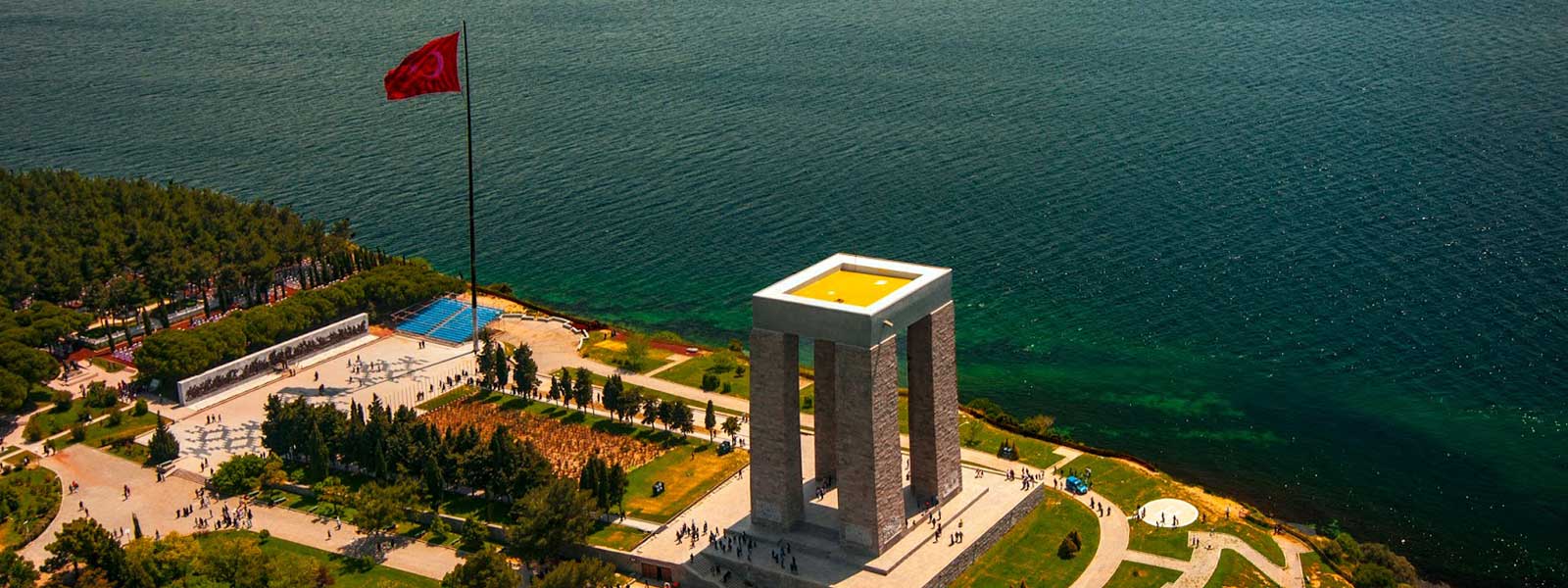
GALLIPOLI
A trip to Gallipoli, Turkey is much more than historic sightseeing of the battle of Canakkale. It makes one reflect on the values that make us a complete human being and where we are on that today… Freedom, independence, sovereignty; the words we all know by heart but hardly ever think about: are we really free, are we really independent of the elements of life that rip us off our resources or are we really conducting our lives ourselves as we wish it to be? As an individual or as a country?
Dardanelles Campaign, a turning point in Turkish history, started with an intention to open a supply route to Russia by the British Empire. This led to a fierce war known as the Gallipoli Campaign or as in Turkish, Battle of Canakkale.
To eliminate the Ottoman Empire by invading Istanbul, the Allied forces had to get control of the Dardanelles first, therefore they leaned on Dardanelles with a huge fleet, but they decided to land troops when they understood that the strait was “impassable!”
The Battle of Canakkale was a wake-up for Turkish nation and as for Ataturk, then a young lieutenant colonel in Ottoman Army, he started heading for his inevitable destiny that would make him the incredible commander of the Turkish War of Independence and finally founder of Turkish Republic.
The war is also important for Australia and New Zealand who were at Gallipoli to fight against the Ottoman Empire. The date of the landing, 25 April, is known as the ANZAC (Australian and New Zealand Army Corps) Day. In those days one can encounter with thousands of Australians and New Zealanders.
The tragic battle was one of the two well-known wars here, the other one being the legendary Trojan War of Homer which most likely took place sometime between 1300–1190 BC.
Dardanelles is an extremely strategic waterway that connects the Black Sea and the Aegean together with the Bosphorus and Peninsula of Gallipoli, Turkey comprises the European side of the strait. Dardanelles is named after Dardanos who is accepted as the ancestor of Trojans. It was called Hellespont by the Greeks meaning “Sea of Helle”. Troy, with the Greek name Ilias, dates from the 3rd millennium BC, a Bronze Age settlement, has levels from Troy I to Troy IV with subdivisions. A famous event that took place here is the crossing of Persian King Xerxes I using a pontoon bridge in 480 BC on his way to invade Greece. Another famous personality to cross the strait is Alexander the Great who visited Troy in 334 BC.
Canakkale and Gelibolu Battle Zones in the World War I are accepted as one of the most important spots to affect the history of the world and they are covered in UNESCO World Heritage Tentative List in 2014.
With memories and feelings documented in the numerous letters, poems and diaries in the front and the unforeseen friendships established with the adversaries has turned a tragedy into a worldwide social and cultural event in Gelibolu, Turkey that we can hope to learn from and carry our world to a better future.
Memorials
In various locations within the National Park may be found 37 Turkish memorials, epitaphs and cemeteries and 33 memorials and cemeteries belonging to Britain, France, Australia, and New Zealand.
Martyr's Memorial
It was erected in honor of Turkish soldiers lost in the battles of the campaign. The complex contains a museum of war materials and a symbolic cemetery at the entrance.
Cape Helles Memorial
It was erected in honor of 20.761 British, Australian and Indian soldiers missing in the battles of the campaign.
French Cemetery and Memorial
It was erected in honor of 14.382 French and African soldiers lost in the battles of the campaign. It was built on a hill dominating Morto Bay.
Lone Pine Memorial and Cemetery
It was erected in honor of 4228 Australian and 708 New Zealand soldiers lost in Anzac in the battles of the campaign.
New Zealand National Memorial and Cemetery
It was erected in honor of 952 New Zealand soldiers lost in the battles of the campaign. It is on the crest of Conkbayiri.
Ari Burcu Cemetery
Got its name from the cape at the Northern end of Anzac Cove. It was one of the original cemeteries throughout the campaign back in 1915 and then graves of 1920 were moved in from the other locations of the Peninsula.
Anzac Cove
It is the site of the first landing of the Australian and New Zealand troops on 25th April 1915. The 600-meter long beach became the main landing base for troops during the 8-month long battle and it was not a safe choice as it was not far from the Turkish artillery.
